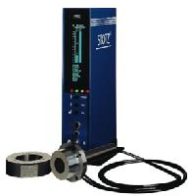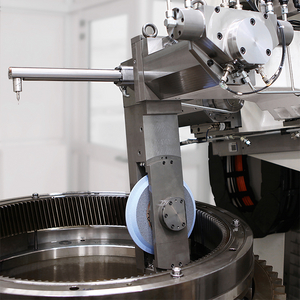Stotz Promotes Air Gaging Benefits

As a provider of air gaging technology, products and quality gaging system integration, Stotz Air Gaging, a division of Advanced Machine & Engineering is pleased to provide a "top ten" list for those considering air gaging. This technology has its roots back over 70 years and is today a viable and highly reliable method for many applications in industries where a high volume of parts is produced or where the precision of hard-to-access dimensions makes other measuring techniques impossible. Air gaging is based on the simple principles of physics that flow and pressure are directly proportional to clearance and that they react inversely to each other. In layman's terms, this means there is a fixed relationship between the object and the airflow, one that can be tracked quite precisely. The flexibility of air gaging means it can be used to measure flatness, roundness, squareness, taper, straightness and matching between pairs of joined surfaces, on connector bodies, for example. Here are 10 quick ways that demonstrate the advantages of air gaging in a job shop. Unlike that TV talk show host, these are not put into any order, as the value of air gaging is also directly proportional to your shop's needs and budget considerations:
Fast. The measurement is extremely fast. Great for 100 percent inspection of high-volume parts. Measurement takes only seconds and can be done inline, in many operations.
High precision measuring results. Air gaging can repeat measurements in the sub-micron range (millionths of an inch range) with a very high degree of accuracy.
No special training. Multiple operators will achieve similar results in measurements without special training.
Easy to use. Goes hand in hand with no special training, as air gaging requires just a few quick steps. On more advanced systems, all quality data are integrated and downloadable via various ports and protocols.
Non-contact. Air gaging is non-contact and will not damage your parts. Sensitive components and delicate webbed structures can be measured without risk of damage.
Self-cleaning. Because the air is blowing across the surface being measured, any dust or coolant will be cleaned from the part. This saves considerable prep time and related costs for the shop. Accuracy is in no way compromised.
No moving parts. This provides for longevity of the gaging system. As long as the air supply is consistent and clean, air gages can last for many years.
Small diameters. Air gaging can be used to measure extremely small diameters. Less than .6 mm on an inside diameter is typical.
Taper measurements. Air is a quick and accurate way to measure tapers. Can display in degrees, minutes, seconds.
Small lands or thin walled parts. Will not distort the part on thin walls. Control of the airflow on today's more sophisticated systems is highly adjustable and, again, does not affect the reliability or accuracy of the measurements.





